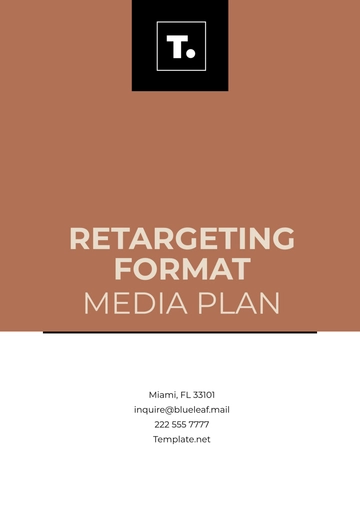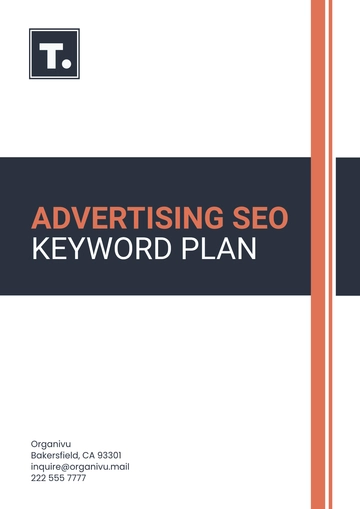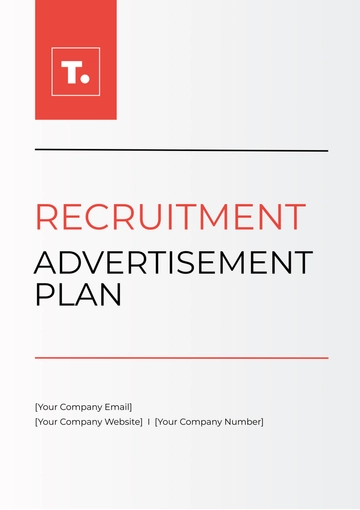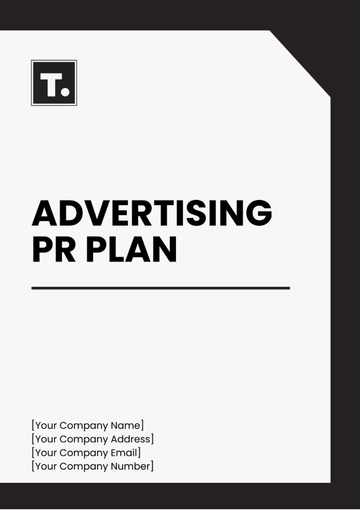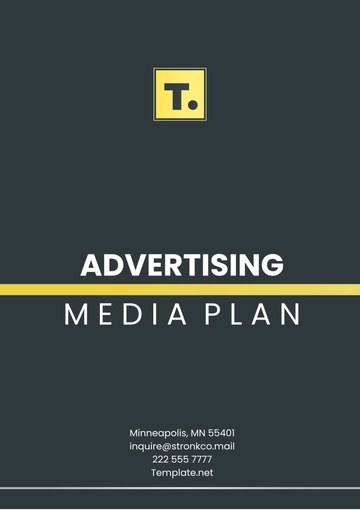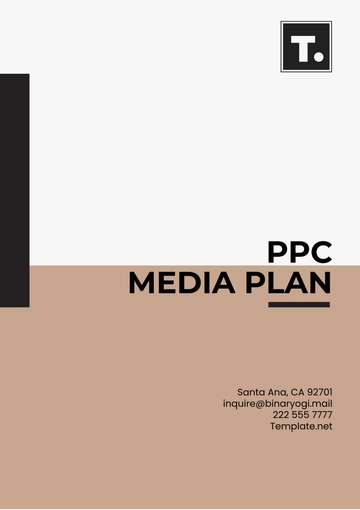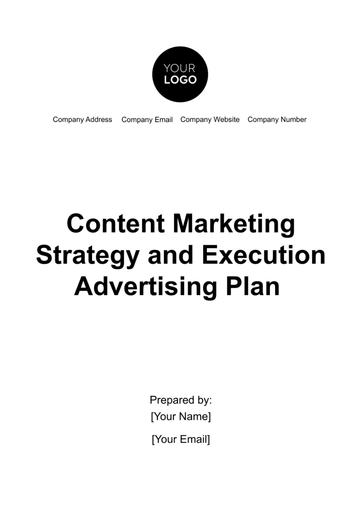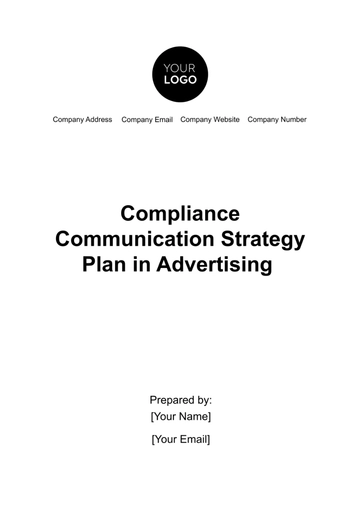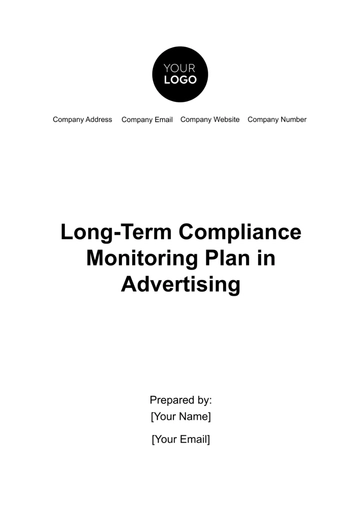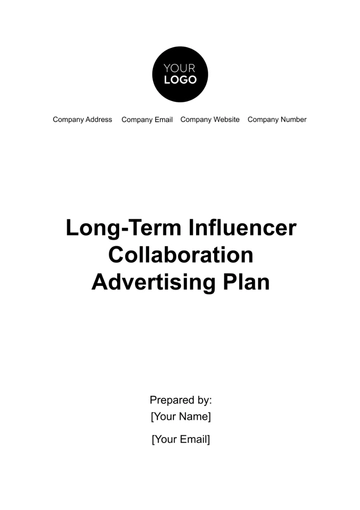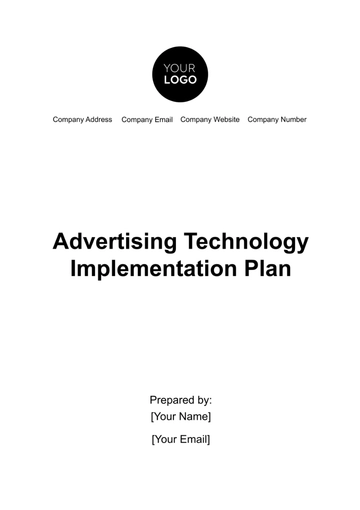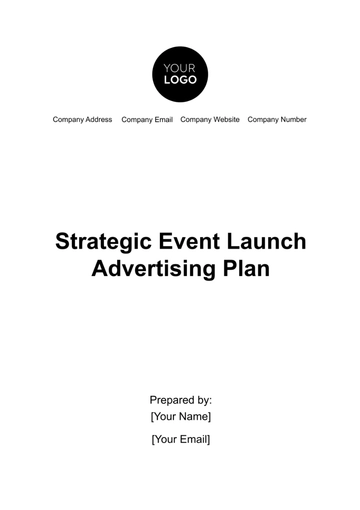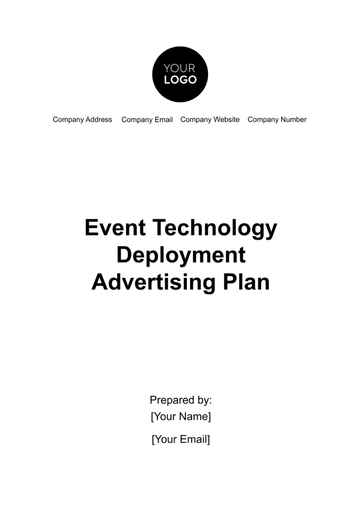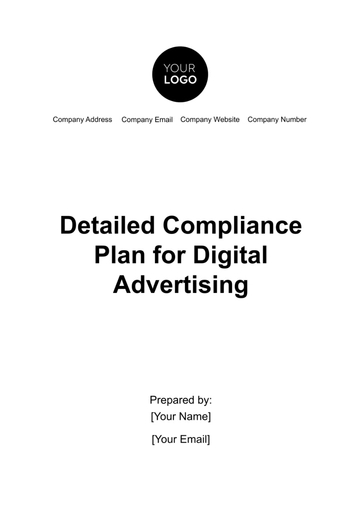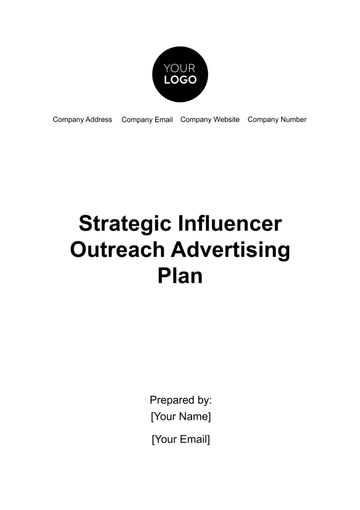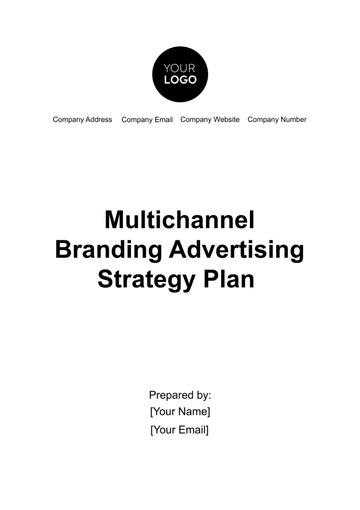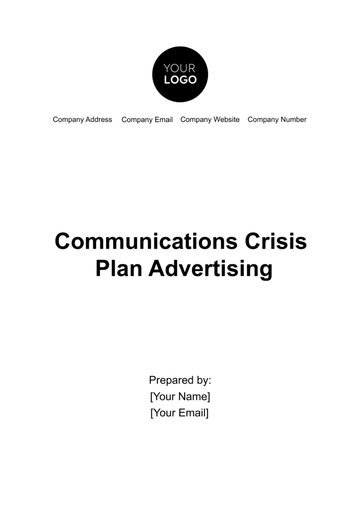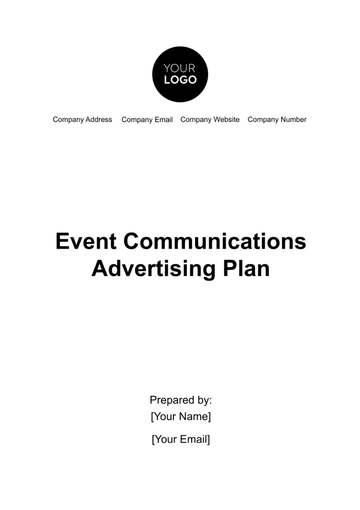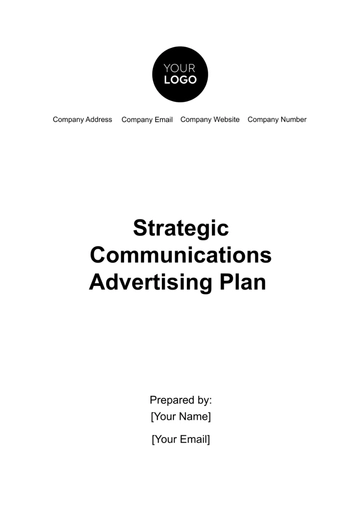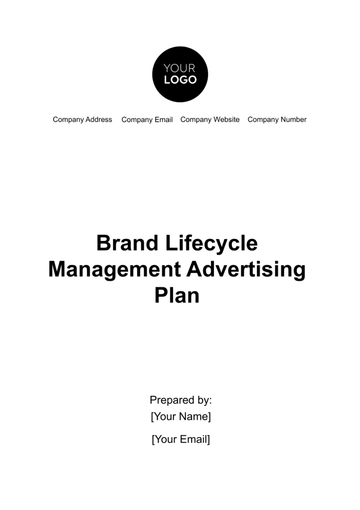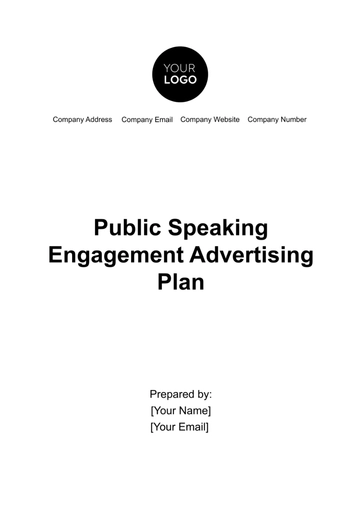Free Advertising Technology Implementation Plan
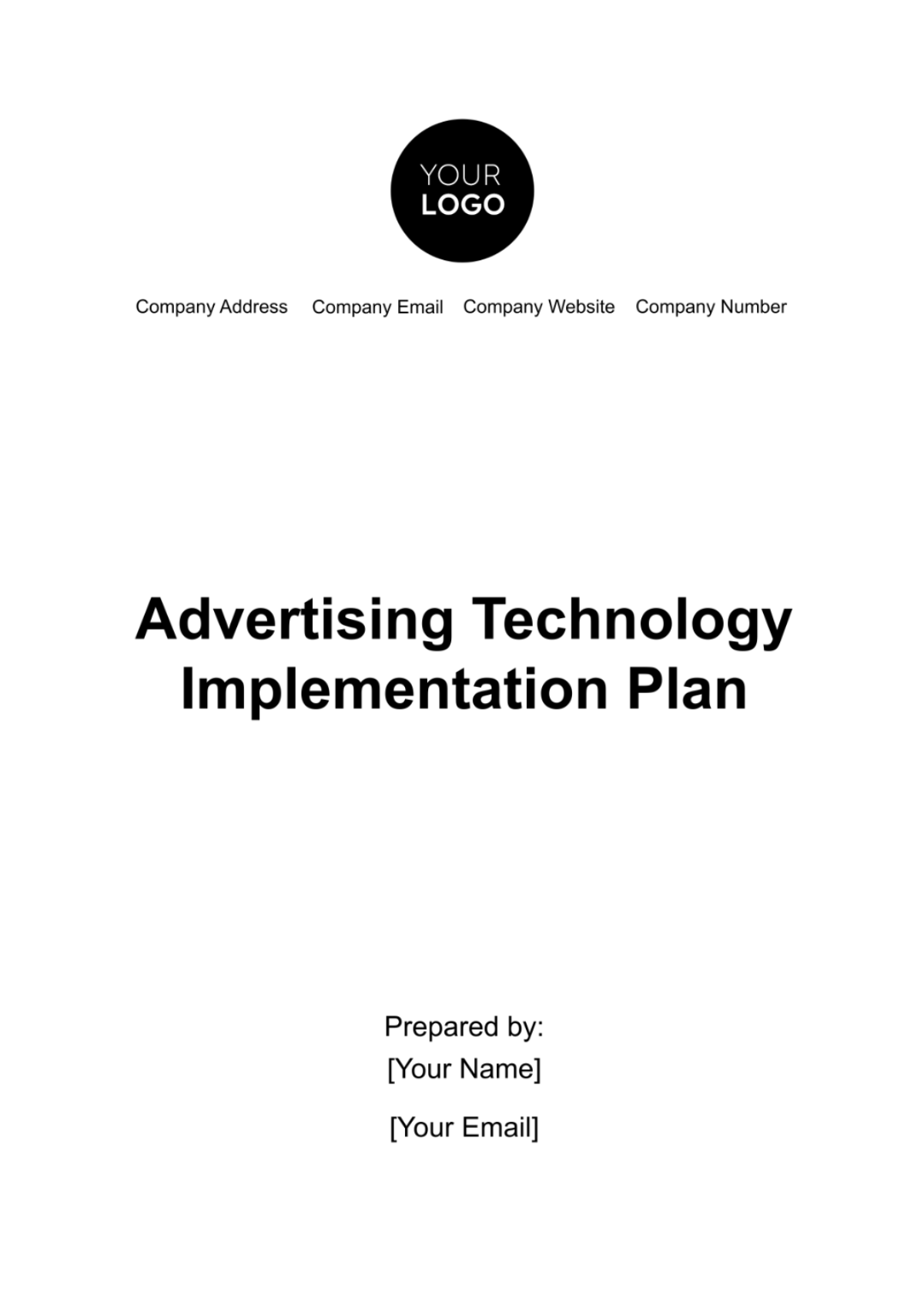
Introduction
A. Purpose
The primary purpose of this Advertising Technology Implementation Plan is to enhance the effectiveness of our digital advertising campaigns. By integrating advanced advertising technology, we aim to increase the click-through rate (CTR) by at least 20%, leading to a projected revenue boost of $500,000 annually.
B. Scope
This plan encompasses the implementation of advertising technology solutions for [Your Company Name]. It will impact various departments, including Marketing, IT, and Sales, and will involve collaboration with [Your Partner Company Name] for seamless integration.
C. Objectives
Improve ad targeting accuracy, resulting in a 15% reduction in ad spend waste.
Enhance customer segmentation, leading to a 25% increase in conversion rates.
Achieve an average ROI of 400% on advertising spend within the first year.
Project Overview
A. Project Background
[Your Company Name] has experienced significant growth over the past two years, with a steady increase in online sales. However, the need for better-targeted advertising campaigns has become evident. In 2049, our annual advertising budget reached $2 million, and it is projected to increase by 10% annually.
B. Timeline
The implementation project is scheduled to begin on January 15, 2050, and is expected to be completed by June 30, 2050, with the advertising technology fully operational.
C. Budget
The budget for this project is as follows:
Hardware and Software: | $500,000 |
Advertising Technology License: | $300,000 annually |
Training and Staffing: | $150,000 |
Marketing Campaigns: | $1,800,000 annually |
Contingency: | $200,000 |
D. Risks and Mitigations
Risk: Delays in software integration.
Mitigation: Engage dedicated software engineers and conduct rigorous testing.
Risk: Budget overruns.
Mitigation: Regular budget reviews and strict adherence to the budget plan.
Risk: Resistance to change among staff.
Mitigation: Comprehensive training and clear communication of benefits.
Advertising Technology Selection
A. Needs Assessment
Before selecting Advertising Technology, a thorough needs assessment was conducted. The assessment revealed that our existing advertising strategies were less efficient than desired. Our average CTR was hovering around 2%, and the ad spend was distributed unevenly across various platforms. It was clear that we needed a solution that could improve ad targeting, streamline campaign management, and provide robust analytics.
B. Vendor Selection
After careful evaluation, we selected [Your Partner Company Name] as our advertising technology partner. The decision was based on several factors, including their track record of successful implementations for companies of our size, positive client feedback, and their competitive pricing structure. [Your Partner Company Name] has a reputation for delivering solutions that align perfectly with our goals.
C. Features and Functionality
Advertising Technology offers a wide range of features, including:
Advanced audience segmentation capabilities, allowing us to target specific demographics and interests.
Real-time ad campaign monitoring and adjustments for optimal performance.
Integration with popular ad platforms like Google Ads and Facebook Ads.
Comprehensive analytics and reporting tools for in-depth campaign analysis.
D. Integration with Existing Systems
To ensure a smooth integration process, [Your Company Name] will establish a dedicated team responsible for aligning the Advertising Technology with our existing systems. We will integrate it with our Customer Relationship Management (CRM) system to enhance customer data utilization, resulting in more personalized ad campaigns.
E. Cost Analysis
The cost analysis for implementing an Advertising Technology is as follows:
Initial Setup Costs: | $150,000 (includes software licensing, hardware, and initial configuration). |
Annual Licensing Fees: | $50,000 |
Training and Onboarding: | $30,000 |
Expected Annual ROI: | Based on our projections, we anticipate a minimum ROI of 300% annually. |
Implementation Strategy
A. Project Team
The project team responsible for the implementation of the Advertising Technology consists of:
Project Manager: [Your Name]
IT Specialist: Anthony Mcholms
Marketing Specialist: Gian Mellark
Data Analyst: Ciph Swanson
B. Workflow
The implementation workflow consists of the following phases:
Phase 1: | Needs Assessment and Vendor Selection (Jan - Feb 2050) |
Phase 2: | Hardware and Software Setup (Mar - Apr 2050) |
Phase 3: | Integration with Existing Systems (May - Jun 2050) |
Phase 4: | Training and Onboarding (Jul - Aug 2050) |
Phase 5: | Pilot Campaigns and Testing (Sep - Oct 2050) |
Phase 6: | Full-scale Implementation (Nov - Dec 2050) |
C. Timeline
The project timeline is as follows:
Start Date: January 15, 2050
End Date: December 31, 2050
D. Testing and Quality Assurance
Thorough testing will be conducted at multiple stages of implementation to ensure the stability and functionality of the Advertising Technology. This includes:
Unit testing during software setup.
Integration testing during the integration phase.
User acceptance testing (UAT) during the training and onboarding phase.
E. Training Plan
A comprehensive training plan has been developed to ensure that [Your Company Name] staff can effectively utilize the Advertising Technology. Training will be conducted by [Your Partner Company Name] and will include hands-on sessions and access to online resources. The estimated training duration is two months, starting in July 2050.
Data Management
A. Data Collection
Effective data collection is essential for the success of our advertising campaigns. We will employ the following methods for data collection:
Customer Interaction Tracking: We will utilize [Your Company Name]'s CRM system to record customer interactions, such as website visits, email responses, and purchase history.
Third-party Data Sources: We will integrate external data sources to enrich our customer profiles and improve targeting accuracy.
Conversion Tracking: Implement conversion tracking pixels to monitor user actions on our website, helping us measure campaign success.
B. Data Storage
To ensure data security and accessibility, [Your Company Name] will utilize a combination of on-premises and cloud-based storage solutions. Customer data will be securely stored in our on-premises servers, while non-sensitive data will be stored in a cloud environment for easy access and scalability.
C. Data Security
Protecting customer data is a top priority. We will implement robust security measures, including encryption, access controls, and regular security audits, to safeguard customer information. Compliance with industry standards such as GDPR and CCPA will also be ensured.
D. Data Analytics
Data analytics will play a crucial role in our advertising strategy. We will use tools like Google Analytics and the Advertising Technology's built-in analytics features to:
Analyze user behavior on our website.
Track ad campaign performance in real-time.
Identify trends and opportunities for optimization.
Generate reports for stakeholders to track ROI.
Advertising Campaign Setup
A. Ad Creative Production
The production of ad creatives will involve collaboration between [Your Company Name] and our creative agency, [Your Partner Company Name]. The creative team will design visually appealing and compelling ad content, including images, videos, and ad copy. We aim to produce at least 50 unique ad creatives per month.
B. Target Audience Definition
Defining the target audience is a critical step in our advertising campaign setup. Using the Advertising Technology's audience segmentation capabilities, we will create detailed buyer personas. For example, we may target:
Age group: 25-34
Interests: Technology enthusiasts
Location: United States
C. Ad Placement Strategy
Our ad placement strategy will encompass various digital platforms, including:
Social Media Advertising: Targeting users on platforms like Facebook, Instagram, and Twitter.
Search Engine Marketing (SEM): Running Google Ads campaigns to capture users actively searching for our products.
Display Advertising: Placing banner ads on relevant websites and apps.
D. Budget Allocation
The annual advertising budget of $2 million will be allocated as follows:
Social Media Advertising: | 40% |
SEM (Google Ads): | 30% |
Display Advertising: | 20% |
Other (Testing and Experiments): | 10% |
This allocation allows for flexibility in adjusting budgets based on the performance of each channel.
Monitoring and Optimization
A. Key Performance Indicators (KPIs)
We will use a set of KPIs to measure the effectiveness of our advertising campaigns:
Click-Through Rate (CTR): We aim to achieve a CTR of 5% by the end of the first quarter.
Conversion Rate: Our goal is to increase the conversion rate from 2% to 4% within six months.
Return on Ad Spend (ROAS): We expect a minimum ROAS of 300% for the entire year.
Ad Impressions: We aim to reach 10 million ad impressions per month.
B. Real-time Monitoring
Advertising Technology provides real-time monitoring capabilities. Our team will continuously monitor campaigns, making adjustments based on real-time data. For example, if an ad is underperforming, we will consider pausing it and reallocating the budget to more successful campaigns.
C. A/B Testing
To optimize ad creatives and messaging, we will conduct A/B tests regularly. For instance, we may test two different ad headlines to determine which one generates a higher CTR. A/B testing will be conducted monthly, with a focus on continuous improvement.
D. Optimization Strategies
Our optimization strategies will be data-driven and include:
Bid Adjustments: Adjusting bids to allocate more budget to high-converting keywords or audience segments.
Ad Scheduling: Analyzing when our target audience is most active and scheduling ads accordingly.
Ad Rotation: Rotating ad creatives to prevent ad fatigue and maintain engagement.
Keyword Optimization: Regularly updating and expanding keyword lists to improve relevance.
Reporting and Analytics
A. Reporting Tools
We will use Advertising Technology's built-in reporting tools to track campaign performance in real-time. Additionally, we will utilize Google Analytics for website data analysis. Custom dashboards will be created to provide a holistic view of our advertising efforts.
B. Custom Reports
Custom reports will be generated to provide stakeholders with tailored insights. These reports will include:
Monthly Campaign Performance: Highlighting key metrics and trends.
Quarterly ROI Reports: Calculating the ROI of our advertising spend.
A/B Test Results: Reporting on the success of various ad variations.
C. Performance Analysis
Our data analysts will conduct in-depth performance analysis, including:
Identifying top-performing campaigns and channels.
Evaluating the impact of ad creative changes on CTR and conversions.
Analyzing the correlation between ad spend and revenue generated.
D. ROI Calculation
We will calculate ROI by comparing the revenue generated from ad campaigns to the total advertising spend. For example, if we spend $100,000 on ads and generate $400,000 in revenue, the ROI would be 300%.
Maintenance and Support
A. Ongoing Maintenance
To ensure the continued functionality and efficiency of the Advertising Technology, [Your Company Name] will establish a dedicated maintenance team. This team will be responsible for:
Regular software updates: Keeping the technology up-to-date with the latest features and security patches.
Performance monitoring: Continuously monitoring system performance and addressing any anomalies promptly.
Database management: Ensuring that data storage remains efficient and well-organized.
User support: Providing assistance to [Your Company Name] staff in case of technical issues or questions.
Security updates: Implementing security updates and improvements to protect against emerging threats.
B. Technical Support
[Your Partner Company Name] will provide technical support for the Advertising Technology. This support will include:
A dedicated support hotline available 24/7.
Access to a knowledge base with FAQs and troubleshooting guides.
Regularly scheduled support meetings to address any challenges or concerns.
Priority support for critical issues to minimize downtime.
C. Upgrades and Updates
Regular upgrades and updates are crucial to maintain the efficiency and security of our advertising technology. We will follow a structured approach to upgrades, including:
Assessing the impact of updates on existing configurations.
Testing updates in a controlled environment before deployment.
Ensuring seamless backward compatibility with existing systems.
Keeping stakeholders informed about upcoming updates and their benefits.
D. Issue Resolution Process
In the event of technical issues or unexpected challenges, [Your Company Name] will follow a well-defined issue resolution process. This process includes:
Issue identification and reporting: Employees will be encouraged to report any issues promptly.
Issue categorization: Categorizing issues based on their severity and impact on operations.
Troubleshooting and analysis: A dedicated team will investigate and diagnose the root cause of the issue.
Resolution and documentation: Implementing a solution and documenting the resolution process for future reference.
Post-resolution evaluation: Conducting a review to ensure that the issue has been successfully resolved and preventive measures are in place.
Conclusion
A. Summary of Achievements
The implementation of the Advertising Technology marks a significant milestone for [Your Company Name]. Through this initiative, we aim to achieve:
Improved ad targeting and relevance, resulting in a projected 20% increase in customer engagement.
Enhanced ROI, with a minimum annual ROI of 300%.
Strengthened data-driven decision-making capabilities through comprehensive analytics.
B. Lessons Learned
Throughout this project, [Your Company Name] has learned valuable lessons. Key takeaways include the importance of thorough needs assessment, the significance of ongoing maintenance, and the effectiveness of data-driven strategies.
C. Future Enhancements
Looking ahead, we envision several future enhancements to our advertising technology implementation:
Advanced AI-driven ad personalization.
Integration with emerging advertising platforms.
Expansion into new markets and demographics.
Continued optimization of ad creative strategies based on data insights.
- 100% Customizable, free editor
- Access 1 Million+ Templates, photo’s & graphics
- Download or share as a template
- Click and replace photos, graphics, text, backgrounds
- Resize, crop, AI write & more
- Access advanced editor
Introducing Template.net's Advertising Technology Implementation Plan Template. This editable and customizable solution, powered by our Ai Editor Tool, simplifies the process of implementing advertising technology. Strategize, outline timelines, and allocate resources seamlessly. Elevate your advertising strategies with Template.net's innovative solutions for effective technology implementation.
You may also like
- Finance Plan
- Construction Plan
- Sales Plan
- Development Plan
- Career Plan
- Budget Plan
- HR Plan
- Education Plan
- Transition Plan
- Work Plan
- Training Plan
- Communication Plan
- Operation Plan
- Health And Safety Plan
- Strategy Plan
- Professional Development Plan
- Advertising Plan
- Risk Management Plan
- Restaurant Plan
- School Plan
- Nursing Home Patient Care Plan
- Nursing Care Plan
- Plan Event
- Startup Plan
- Social Media Plan
- Staffing Plan
- Annual Plan
- Content Plan
- Payment Plan
- Implementation Plan
- Hotel Plan
- Workout Plan
- Accounting Plan
- Campaign Plan
- Essay Plan
- 30 60 90 Day Plan
- Research Plan
- Recruitment Plan
- 90 Day Plan
- Quarterly Plan
- Emergency Plan
- 5 Year Plan
- Gym Plan
- Personal Plan
- IT and Software Plan
- Treatment Plan
- Real Estate Plan
- Law Firm Plan
- Healthcare Plan
- Improvement Plan
- Media Plan
- 5 Year Business Plan
- Learning Plan
- Marketing Campaign Plan
- Travel Agency Plan
- Cleaning Services Plan
- Interior Design Plan
- Performance Plan
- PR Plan
- Birth Plan
- Life Plan
- SEO Plan
- Disaster Recovery Plan
- Continuity Plan
- Launch Plan
- Legal Plan
- Behavior Plan
- Performance Improvement Plan
- Salon Plan
- Security Plan
- Security Management Plan
- Employee Development Plan
- Quality Plan
- Service Improvement Plan
- Growth Plan
- Incident Response Plan
- Basketball Plan
- Emergency Action Plan
- Product Launch Plan
- Spa Plan
- Employee Training Plan
- Data Analysis Plan
- Employee Action Plan
- Territory Plan
- Audit Plan
- Classroom Plan
- Activity Plan
- Parenting Plan
- Care Plan
- Project Execution Plan
- Exercise Plan
- Internship Plan
- Software Development Plan
- Continuous Improvement Plan
- Leave Plan
- 90 Day Sales Plan
- Advertising Agency Plan
- Employee Transition Plan
- Smart Action Plan
- Workplace Safety Plan
- Behavior Change Plan
- Contingency Plan
- Continuity of Operations Plan
- Health Plan
- Quality Control Plan
- Self Plan
- Sports Development Plan
- Change Management Plan
- Ecommerce Plan
- Personal Financial Plan
- Process Improvement Plan
- 30-60-90 Day Sales Plan
- Crisis Management Plan
- Engagement Plan
- Execution Plan
- Pandemic Plan
- Quality Assurance Plan
- Service Continuity Plan
- Agile Project Plan
- Fundraising Plan
- Job Transition Plan
- Asset Maintenance Plan
- Maintenance Plan
- Software Test Plan
- Staff Training and Development Plan
- 3 Year Plan
- Brand Activation Plan
- Release Plan
- Resource Plan
- Risk Mitigation Plan
- Teacher Plan
- 30 60 90 Day Plan for New Manager
- Food Safety Plan
- Food Truck Plan
- Hiring Plan
- Quality Management Plan
- Wellness Plan
- Behavior Intervention Plan
- Bonus Plan
- Investment Plan
- Maternity Leave Plan
- Pandemic Response Plan
- Succession Planning
- Coaching Plan
- Configuration Management Plan
- Remote Work Plan
- Self Care Plan
- Teaching Plan
- 100-Day Plan
- HACCP Plan
- Student Plan
- Sustainability Plan
- 30 60 90 Day Plan for Interview
- Access Plan
- Site Specific Safety Plan

